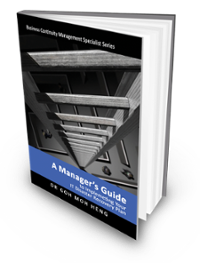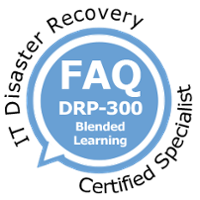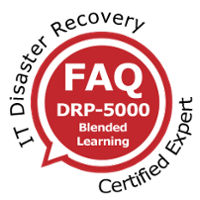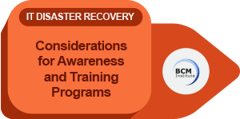Considerations for IT Disaster Recovery Awareness and Training Programs
When designing awareness and training programs, always consider the type of information or knowledge that are required by the employees, contractors, visitors, managers and individuals who have a role in the DR Plan. In general, some of the topics to look into should, at least, address the following:
- Threats, hazards, and protective actions.
- Notification, warning and communications procedures.
- Emergency response procedures.
- Evacuation, shelter and accountability procedures.
- Location and use of common emergency equipment.
- Emergency shutdown procedures
Awareness Programs
Awareness of DR Plan or activities will increase the efficiency and effectiveness of staff response towards disaster situations.
For example, if the staff members react to fire alarms by going to the correct exit and assembly area, it will minimize confusion and injuries. Thus, an awareness program is a key factor to enhance the effectiveness of a DR Plan, thereby reducing confusion, reducing recovery time and ensuring that orderly DR process can be done. In this section, we will share with you some of the commonly practiced awareness programs.
Annual Training Plan
Make the business unit heads accountable for ensuring that staff that are under his/her charge are aware of the DR responsibilities, process and procedures directly under the business unit’s charge.
He/she must also make sure that the staff knows what to do in maintaining the DR Plan such as keeping the inventories of vital records, equipment, tools, applications, etc. up-to-date. At the same time, there is also a need to establish a training policy such that all business unit heads include each staff for at least one training program, regardless of seminars, workshops, talks or discussion sessions of the annual training map.
Reinforce the awareness of the personnel of the organization DR process by making business unit heads accountable for the budget needed to carry out all these DR Plan maintenance work and the DR training courses for the staff.
New Employee Orientation Program
Make it compulsory for all new employees to attend a briefing session on the organization’s DR Plan and the expectation of each employee during a disaster situation. To reinforce that the organization is serious about DR program, make them sign-off after attending the session. The HR can also highlight that DR training is part of the annual training plan of the organization.
Posters and Notices
Another way of raising the awareness of DR process in the organization is to put up posters and notices of available DR courses, dates of DR exercises, names of participants of DR exercises, recognition from Executive Management on the successful execution of DR exercises onto organization notice-boards.
Through these publicity channels, staff level of awareness of DR activities will be increased, and staff will know their effort in DR Planning and maintenance is well appreciated by the management.
However, the shortcoming of this method is you must be able to renew the posters and notices promptly, and not leave them there. Otherwise, the negative effects of organization’s ignorance of the DR activities are also easily shown
Training Programs
DR training focuses more on skill sets and know-how in performing the DR activities while awareness programs focus on general knowledge. Some examples of DR training are the technical skills for recovering a Windows NT server, the recovery of data from backup tapes using a backup software such as ARCserve.
In general, DR training can be divided into five major phases, they are a pre-planning phase, planning phase, development phase, testing phase and maintenance phase. For each of these phases, the scope and requirements for the training needs differ in order to address the needs of different personnel and different skill-sets.
Pre-planning Phase
During the pre-planning phase, the scope and objectives are to equip the key personnel with enough understanding of DR Planning, the methodology for carry out a proper DR Plan, the needs of having a DR Plan and how to estimate budget requirements for carrying out a DR Plan development and maintenance.
In summary, in this phase of training is to equip the key DR personnel with the knowledge to justify to the management on the need of having a DR Plan for the organization, so that sufficient budget, resources, and commitment are given to develop a proper DR Plan.
Project Management Phase
In this project management phase, the training should focus on development of skill-sets of identifying the most suitable DR Plan development methodology for the organization, the skills of carrying out risk analysis, assessment and management, and the technical know-how of carrying a Business Impact Analysis to ensure that the management of commit their support and endorse the kicking-off of the DR Plan development for the organization.
Plan Development Phase
In this phase, the training should focus on specific procedural aspects of developing and implementing the DR Plan. The training focus will be in the areas of:
- Project management, which is essential for successful DR Plan development
- DR Plan development methodology selected for the organization during the planning phase
- Review process of documentation standards
- DR Plan development software, if selected for developing the DR Plan
- Definition of specific roles and responsibilities in the execution of the plan
- Identification of inter-dependencies of individual units’ plans to the overall DR Plan
- A thorough understanding of the team checklists of procedures, including notification procedures
Testing and Exercise Phase
In this phase of training, the organization should concentrate on building up skill sets of staff so that they can verify and validate the strategies and procedures detailed in DR Plan. At the same time, exercising the DR Plan will also provide unique and valuable training for the DR team members.
The scope of the training should concentrate on getting the staff to:
- Understand the various types of testing methodology
- Define test schedules
- Establish objectives of test, test criteria, and test scenarios
- Recap any specific technical skill-sets for recovering the IT systems or applications
- Capture test results
- Document results and any lessons learned
Cloud, In addition, develop the skill-sets of carrying out post-test review meetings to capture all the shortcomings, errors, omissions or gaps of the DR Plan against the actual operational environments.
Program Management Phase
In the program management phase, the training should focus on ways of plan distribution and collection, the establishment of management control processes for modifying and updating the DR Plan and how to establish the frequency of DR Plan review and updating.
At this point, the training is rather procedural and sequential, as the training sessions must focus on standard documentation formatting, standard procedures for version control, distribution control, and review and approval of updates to planning.
Conclusion
Training and awareness is an on-going process and not a one-off event The DR Plan changes with staff turnover, business environment changes, as well as hardware, software and application systems upgrades.
Thus, continually educating the staff involved in DR with correct and updated skill-sets is critical to the readiness of the organization to respond to disasters. The most important point is refreshing, refreshing and refreshing the memory of the staff to ensure complete understanding of all processes and procedures of the DR Plan so that it can work. A good plan, without the people with the right skill sets to operate it, is a useless stack of papers. Training and awareness make a DR Plan work.
Reference
Goh, M. H. (2016). A Manager's Guide to Implementing Your IT Disaster Recovery Plan. Business Continuity Management Specialist Series (2nd ed.). Singapore: GMH Pte Ltd.
Extracted from "Chapter 4: Project Management: Step 1: Establish the Need for DR Planning"
More Information About IT DR Blended Learning
To know more about our blended learning program and when the next course is scheduled, feel free to contact our friendly course consultant colleagues via sales.ap@bcm-institute.org. They are the BL-DR-3 Blended Learning DR-300 IT Disaster Recovery Implementer and the BL-DR-5 Blended Learning DR-5000 IT Disaster Recovery Expert Implementer.
 |
 |
 |
![[BL-DR-5] DRP-5000 Course Schedule 2020](https://blog.bcm-institute.org/hs-fs/hubfs/hub_generated/resized/16932a89-e3f4-4b43-8b11-27d3f71e2eb2.png?width=200&height=59&name=16932a89-e3f4-4b43-8b11-27d3f71e2eb2.png) |
 |
![[BL-DR-5] DRP-5000 Register Now](https://blog.bcm-institute.org/hs-fs/hubfs/hub_generated/resized/f68e3f39-f42c-47d2-8140-f19a4b9701d4.png?width=200&height=59&name=f68e3f39-f42c-47d2-8140-f19a4b9701d4.png) |
 |
Please feel free to send us a note if you have any of these questions to sales.ap@bcm-institute.org |
 |




